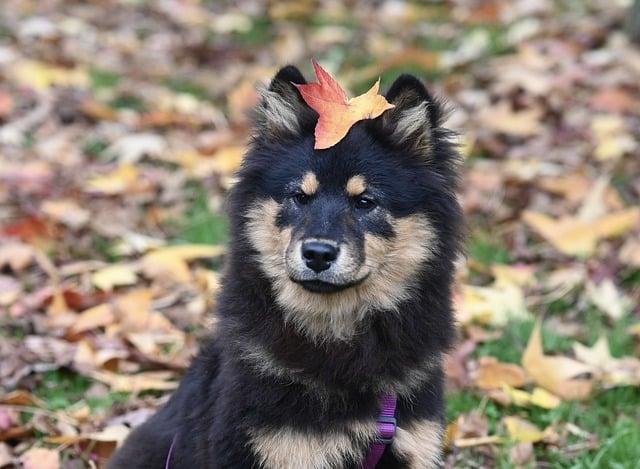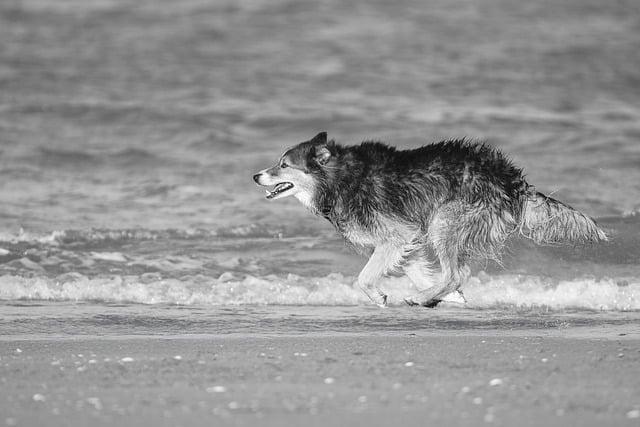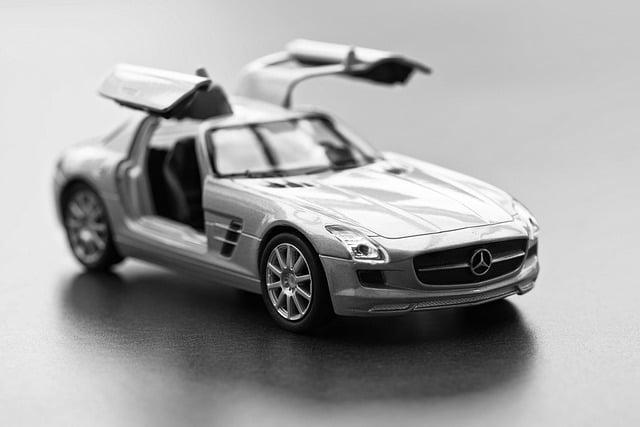Max, a spirited golden retriever, had a favorite squeaky toy—a bright red bone he carried everywhere. At first, his owner, Sarah, thought it was adorable. But soon, Max became fixated, ignoring walks and playtime with other dogs. Concerned, Sarah consulted a vet, who explained that while some attachment is normal, obsession can lead to anxiety and behavioral issues. By introducing new toys and structured play, Sarah helped Max regain balance in his life. Remember, a healthy relationship with toys fosters a happy, well-rounded dog!
Contents
- Understanding the Psychological Impact of Toy Obsession in Dogs
- Identifying the Signs of Unhealthy Attachment to Toys
- Balancing Playtime: Strategies for Healthy Toy Interaction
- Promoting a Well-Rounded Lifestyle for Your Dog Beyond Toys
- Q&A
Understanding the Psychological Impact of Toy Obsession in Dogs
When a dog becomes fixated on a particular toy, it can lead to a range of psychological effects that may not be immediately apparent. While some level of attachment to toys is normal, an obsession can indicate underlying issues that need to be addressed. Understanding these effects is crucial for pet owners who want to ensure their furry friends lead balanced and happy lives.
One significant concern is the potential for **anxiety and stress**. Dogs that obsess over toys may experience heightened levels of anxiety when the toy is not available. This can manifest in behaviors such as excessive barking, pacing, or destructive tendencies. The reliance on a single object for comfort can create a cycle of dependency, making it difficult for the dog to cope with changes in their environment or routine.
Additionally, an obsession with a toy can lead to **social isolation**. Dogs that are overly focused on their toys may neglect social interactions with humans or other dogs. This can hinder their ability to develop essential social skills and may result in behavioral issues. Engaging with other pets and people is vital for a dog’s emotional well-being, and a toy obsession can create barriers to these interactions.
it’s important to consider the impact on **physical health**. Continuous play with a single toy can lead to repetitive strain injuries or dental problems, especially if the toy is hard or abrasive. Moreover, if a dog becomes so engrossed in their toy that they neglect exercise or proper nutrition, it can lead to obesity and other health complications. Balancing playtime with a variety of toys and activities is essential for maintaining both mental and physical health.
Identifying the Signs of Unhealthy Attachment to Toys
When observing your dog’s behavior, it’s essential to recognize the signs that may indicate an unhealthy fixation on a particular toy. While it’s normal for dogs to have favorites, an obsession can manifest in various ways that may raise concerns. Pay attention to how your dog interacts with their toy and consider the following indicators:
- Excessive Play: If your dog spends an inordinate amount of time playing with one toy, to the exclusion of other activities, it may signal an unhealthy attachment.
- Destructive Behavior: A dog that chews, tears apart, or otherwise damages their toy excessively may be using it as a coping mechanism for stress or anxiety.
- Signs of Anxiety: Watch for signs of distress when the toy is out of reach or when playtime is over. Whining, pacing, or searching for the toy can indicate an unhealthy dependency.
- Social Withdrawal: If your dog becomes less interested in interacting with people or other pets and prefers to isolate themselves with their toy, this could be a red flag.
Another critical aspect to consider is how your dog reacts when the toy is taken away. A healthy attachment allows for some flexibility, but an obsessive dog may exhibit extreme reactions. This can include:
- Intense Frustration: Growling, barking, or showing signs of aggression when the toy is removed can indicate an unhealthy attachment.
- Inability to Focus: If your dog struggles to engage in other activities or commands when their toy is present, it may suggest an overwhelming fixation.
- Physical Symptoms: Stress-related behaviors such as excessive panting, drooling, or even gastrointestinal issues can arise from an unhealthy attachment.
It’s also important to evaluate the context of your dog’s attachment. If the toy serves as a source of comfort during stressful situations, it may be beneficial to explore alternative methods of providing security. Consider the following:
- Variety of Toys: Introduce a range of toys to encourage your dog to engage in diverse play, reducing the likelihood of obsession.
- Structured Playtime: Set specific times for play to help your dog understand that toys are part of a balanced routine.
- Positive Reinforcement: Reward your dog for engaging with different toys or participating in other activities, fostering a healthier relationship with play.
Ultimately, understanding your dog’s attachment to their toys is crucial for their overall well-being. By identifying the signs of an unhealthy fixation, you can take proactive steps to ensure that your dog enjoys a balanced and fulfilling play experience. This not only enhances their happiness but also strengthens the bond you share.
Balancing Playtime: Strategies for Healthy Toy Interaction
When it comes to our furry companions, playtime is essential for their physical and mental well-being. However, an obsession with a particular toy can lead to unhealthy behaviors. To ensure that your dog enjoys a balanced play experience, consider implementing a few effective strategies that promote healthy interaction with their toys.
First, **rotate toys regularly** to keep your dog engaged and prevent fixation on a single item. By introducing new toys or reintroducing old favorites, you can stimulate your dog’s curiosity and encourage exploration. This not only helps to maintain their interest but also reduces the likelihood of obsessive behaviors. Aim to have a variety of toys that cater to different play styles, such as chew toys, interactive puzzles, and fetch items.
Second, establish **playtime boundaries** to prevent excessive focus on one toy. Set specific times for play sessions and encourage your dog to engage with different toys during these periods. This structured approach helps to create a routine that promotes healthy play habits. Additionally, consider incorporating training exercises into playtime, which can redirect your dog’s energy and attention away from their obsession while reinforcing positive behaviors.
Lastly, **observe your dog’s behavior** closely to identify any signs of stress or anxiety related to their toy obsession. If you notice that your dog becomes overly anxious or agitated when the toy is not available, it may be time to intervene. Gradually desensitize your dog to the absence of the toy by introducing alternative activities, such as walks or social play with other dogs. This not only diversifies their play experience but also fosters a more balanced relationship with their toys.
Promoting a Well-Rounded Lifestyle for Your Dog Beyond Toys
While toys are an essential part of your dog’s playtime, it’s crucial to recognize that a well-rounded lifestyle encompasses much more than just playthings. Engaging your dog in a variety of activities can help prevent obsessive behaviors and promote overall well-being. Consider incorporating the following elements into your dog’s daily routine:
- Physical Exercise: Regular walks, runs, or play sessions in a safe, open area can help burn off excess energy and keep your dog physically fit.
- Mental Stimulation: Puzzle toys, training sessions, and interactive games can challenge your dog’s mind, reducing the likelihood of fixation on a single toy.
- Socialization: Arrange playdates with other dogs or visits to dog parks. Social interactions can provide your dog with new experiences and reduce dependency on toys for entertainment.
- Varied Environments: Exposing your dog to different settings, such as hiking trails or beach outings, can stimulate their senses and encourage exploration beyond their favorite toy.
Incorporating diverse activities into your dog’s life not only enhances their physical health but also nurtures their emotional and mental well-being. Dogs thrive on routine, but introducing variety can keep their lives exciting and fulfilling. By balancing playtime with other enriching experiences, you can help your dog develop a more adaptable and resilient personality.
Moreover, fostering a well-rounded lifestyle can strengthen the bond between you and your dog. Engaging in activities together, such as agility training or obedience classes, can create shared experiences that deepen your connection. This bond is vital for your dog’s emotional stability and can help mitigate any obsessive tendencies they may develop towards specific toys.
Ultimately, a holistic approach to your dog’s lifestyle will not only prevent unhealthy obsessions but also contribute to a happier, healthier pet. By prioritizing a mix of physical, mental, and social activities, you can ensure that your dog leads a fulfilling life, rich in experiences that go far beyond the confines of their favorite toy.
Q&A
-
Is it normal for dogs to be obsessed with toys?
Yes, it is quite normal for dogs to develop a strong attachment to certain toys. This behavior can stem from their natural instincts to chew, chase, and play. However, moderation is key to ensuring that this obsession does not lead to behavioral issues.
-
Can a toy obsession lead to behavioral problems?
Yes, if a dog becomes overly fixated on a toy, it can lead to anxiety, possessiveness, or aggression. It’s essential to monitor your dog’s playtime and encourage a variety of activities to prevent unhealthy attachments.
-
How can I manage my dog’s toy obsession?
To manage your dog’s obsession, consider the following strategies:
- Rotate toys regularly to maintain interest.
- Introduce new toys to diversify playtime.
- Set boundaries on playtime to encourage breaks.
- Engage in interactive play to strengthen your bond.
-
When should I be concerned about my dog’s toy obsession?
If your dog shows signs of distress when separated from the toy, exhibits aggressive behavior towards others, or neglects other activities, it may be time to consult a veterinarian or a professional dog trainer for guidance.
while a dog’s obsession with a toy may seem harmless, it’s essential to monitor their behavior. Ensuring a balanced playtime and introducing variety can promote healthier habits and a happier, well-adjusted pet. Prioritize your dog’s well-being!

大家好,我是彼得潘,專業的手法身體治療師。我喜歡探索和研究各種主題,並透過與人工智慧的合作分享專業、實用、有趣的文章。我們定期進行人工審核,以確保內容的準確性。如果您發現文章中有任何不準確的地方,請隨時與我們聯繫,我們會及時糾正。您可以透過 [email protected] 與我們聯繫。



